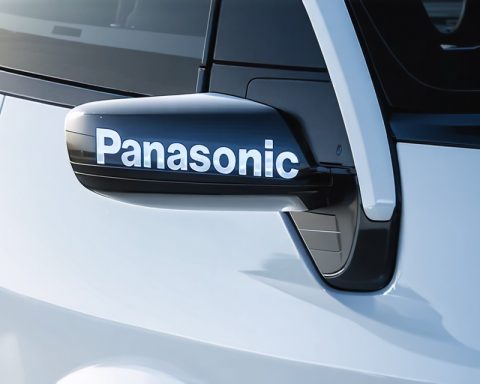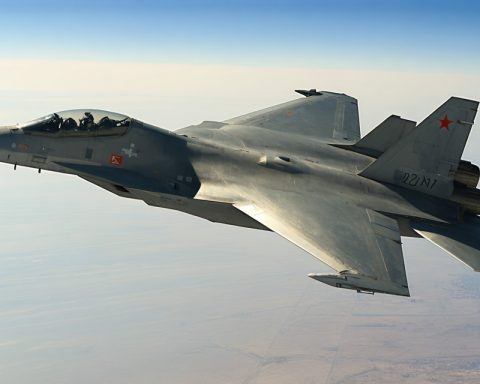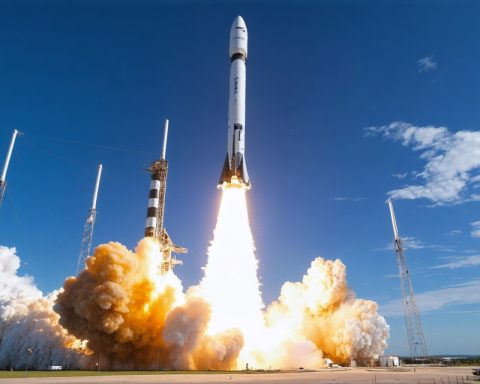- A mysterious metallic object discovered in Poznan has sparked interest from Poland’s space agency, POLSA, as it may be debris from a Falcon 9 rocket.
- Incidents involving space debris are increasing as rocket launches, like Falcon 9’s, become more frequent.
- Images of the object are being analyzed to confirm its origin, specifically whether it is linked to the Falcon 9’s February mission launching Starlink satellites.
- The event has coincided with reported flashes in the Polish night sky, fueling further speculation.
- Authorities, mindful of regional tensions near Ukraine, are cautiously examining the object with specialist teams to ensure public safety.
- The situation underlines the complexities and potential hazards of space exploration on civilian life.
In the early light of a crisp Poznan morning, an unusual object lay quietly, its metallic surface contrasting sharply against the grass of a nearby company yard. This mysterious find has captured the attention of Poland’s space agency, POLSA, which is racing to determine whether this object hails from the cosmos—specifically, a piece of debris from a now-famous Falcon 9 rocket.
Such occurrences might seem rare, but they’re becoming more common as rockets like the Falcon 9 regularly break through our atmosphere, offering both promise and potential problems for those on the ground. As the Polish police and POLSA strategize, images of the object are being rapidly analyzed. Was it truly from the Falcon 9’s recent mission in February, a mission tasked with launching the ambitious Starlink satellites?
Adding to this intrigue, the Polish night sky reportedly erupted in flashes, stirring imaginations and raising eyebrows. These brilliant displays led to speculation, drawing connections between this terrestrial anomaly and the celestial event.
Yet, in a world on edge, especially with tensions ever-present near the Ukrainian border, Polish authorities act with caution. A seasoned chemical and ecological rescue team stealthily approaches the scene, ensuring that beneath the object’s reflective surface, danger doesn’t lurk.
As the story unfolds, one thing becomes clear: the intersection of space exploration and civilian life is fraught with both wonder and concern. This unexpected cosmic wayfarer challenges us to ponder the complexities of our journey skyward, reminding us to tread thoughtfully as we reach for the stars.
Is That Space Junk in Your Yard? Decoding the Mystery and Implications of Rocket Debris on Earth
Features, Specs & Pricing of the Falcon 9 Rocket
The Falcon 9 is a reusable rocket designed and manufactured by SpaceX for reliable and safe transport of both cargo and humans. Here are some notable features and specs:
– Height: 70 meters (230 feet)
– Diameter: 3.7 meters (12 feet)
– Mass: 549,054 kg (1,207,920 lb)
– Payload Capacity to Low Earth Orbit (LEO): 22,800 kg (50,265 lb)
– Cost per Launch: Approximately $67 million
The reusability of Falcon 9 significantly reduces the cost of access to space, allowing SpaceX to operate more economically than its competitors.
Real-World Use Cases for Rocket Debris
With space becoming increasingly commercialized, discarded rocket components occasionally re-enter Earth’s atmosphere, often falling into oceans. However, some debris lands on populated areas, leading to:
1. Scientific Study: Enables scientists to examine these objects, contributing to research on material degradation in space.
2. Public Education: Raises awareness about space activities and encourages STEM education.
3. Policy Making: Pressures national and international bodies to address space debris regulations.
Market Forecasts & Industry Trends
The rise of private space companies like SpaceX is propelling rapid growth in the space travel industry. According to a report by Morgan Stanley, the global space industry could generate revenue of $1 trillion or more by 2040.
The space debris mitigation market is also growing. Research and Markets predict a substantial growth by 2027 in technologies aimed at reducing space debris.
Controversies & Limitations
While the Falcon 9 represents technological advancement, it also leads to debates about space debris management. Some controversies include:
– Environmental Concerns: Uncontrolled re-entry of debris poses potential risks to human health and property.
– Legal Issues: International law requires countries to bear responsibility for damages caused by their spacecraft, but enforcing these laws remains challenging.
Security & Sustainability
Polish authorities’ cautious approach to examining the mysterious object highlights concerns over:
– Safety Protocols: Employing chemical and ecological rescue teams for safe inspection.
– Sustainability Initiatives: Encouraging collaboration between space agencies to develop more sustainable space travel practices.
Actionable Recommendations
1. Stay Informed: Engage with government and space agency communications if space debris is suspected in your area.
2. Educational Outreach: Encourage local schools and organizations to host space education events.
3. Safety First: Report any suspected debris to local authorities immediately and maintain a safe distance.
4. Policy Advocacy: Support policies promoting the responsible disposal of space debris and sustainable space exploration.
By understanding and addressing the complexities of rocket debris, we can continue to explore space while safeguarding life on Earth. For more insights into space technologies, visit SpaceX.







